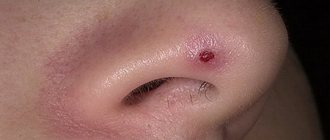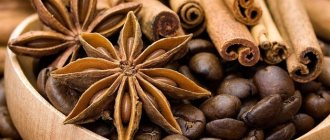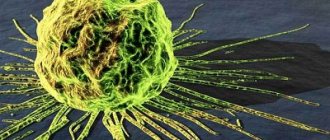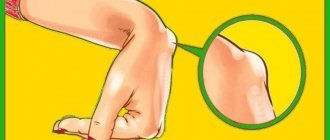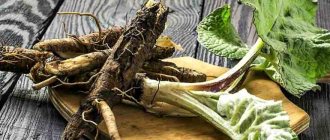Biological certificate
A perennial plant belonging to the legume family. It has small flowers of red or lilac color, sometimes you can find blue ones. Clover grows up to 50 cm. It blooms from mid to late summer; during this period it is collected for storage. The main use is livestock feed, but the plant can also be used in cooking and medicine. Clover is found almost everywhere and has a rich composition of nutrients. The great advantage of grass is that it can be grown on your own property. The price at the pharmacy is low - about 70 rubles per 50 grams.
Contraindications
Clover tincture with vodka for blood vessels has the following contraindications:
- childhood;
- individual intolerance to at least one of the components of the plant;
- a past allergic reaction to the plant or its components;
- taking hormonal medications;
- recent hypertensive crisis or history of acute hypertension;
- pregnancy;
- taking medications used to treat acute hepatitis;
- recent surgery or a week before the planned operation (clover infusion can thin the blood, which can cause bleeding in the postoperative period or during the procedure);
- breastfeeding period;
- hormone-dependent tumors (ovarian and breast cancer);
- Clover infusion does not combine with drugs used to treat cancer patients;
- acute period of diseases of the digestive system;
- previous myocardial infarction;
- the initial period of rehabilitation after a cerebrovascular accident;
- phlebeurysm;
- acute hepatitis or liver failure;
- acute renal failure;
- increased blood clotting;
- alcohol dependence syndrome in remission;
- thrombophlebitis;
- taking Heparin, Warfarin, Aspirin and other anticoagulants;
- loose stools;
- People who are driving should not take the tincture (due to the alcohol in its composition).
We recommend that you familiarize yourself with the benefits of chamomile decoction
The finished product can be purchased at a pharmacy. The instructions for use must be strictly followed.
Considering the presence of many contraindications and side effects, you can use red clover tincture only after consulting a doctor.
The most common side effects of red clover-based tinctures are:
- skin itching;
- loose stools;
- menstrual irregularities in women;
- vomit;
- dizziness;
- internal bleeding;
- hives or other rashes on the body;
- nausea;
- muscle pain.
Use in medicine
Clover can and should be used in medicine. It is advisable to use the plant in different ways to evaluate all its medicinal properties: make tinctures or decoctions, use externally or internally.
The leaves of the herb are very helpful in treating ulcerative and deep wounds of the skin that do not heal for a long time. Finely chopped clover is also used to treat other skin conditions, such as abscesses and burns. It can be included in chest and choleretic preparations.
The root of the herb has been well proven to be effective in treating inflammation of the genital organs. In addition, it has a therapeutic effect in the treatment of tuberculosis and various cancers.
The stems can be used to relieve symptoms of scurvy, malaria and rickets. They are good at lowering cholesterol in the presence of atherosclerotic plaques.
The decoction quickly relieves headaches and dizziness, and can increase appetite. The tincture helps relieve symptoms of asthma, anemia, shortness of breath and metrorrhagia. The juice is used in the treatment of respiratory diseases, as well as gout and poisoning.
The use of clover during menopause in women is very effective. It relieves discomfort, relieves inflammation, combats vaginal dryness and softens hot flashes. Also, the plant will be useful for painful menstruation, gynecological diseases and anorexia.
Indications for use
Red clover infusion is used for various diseases due to the presence of vitamins, protein, trace elements, minerals, essential oils, glycosides, flavonoids and other compounds.
Indications for use:
- various rashes on the skin;
- ulcerative skin lesions;
- fungal diseases;
- slowing down metabolism;
- obesity;
- fragility of the vascular wall;
- chronic headaches;
- sleep disorders;
- eczema;
- arterial hypertension;
- decreased immunity or other immune diseases;
- deterioration of memory and active brain activity;
- helminthic infestations;
- general weakness and asthenia;
- elevated blood cholesterol levels;
- psoriatic changes in the skin;
- decreased blood clotting;
- boils, acne and other skin diseases;
- constipation;
- hypoxic changes in the myocardium;
- poorly healing wounds;
- neoplasms (tumors);
- noise in ears;
- damage to large joints;
- atherosclerotic heart and vascular disease;
- general intoxication of the body and food poisoning;
- infections;
- gynecological pathologies;
- viral diseases;
- pain during menstruation;
- menopausal symptoms of various origins;
- purulent infections (multiple furunculosis);
- angina.
We recommend that you read Inhalation with chamomile
To cleanse blood vessels
Red clover tincture is often used for various diseases of the cardiovascular system and to cleanse blood vessels. The positive effect on the vascular wall has been proven by numerous scientific studies.
Clover tincture has a beneficial effect on cardiac activity due to the presence of minerals, trace elements and many other elements in it, which help normalize blood pressure, stabilize cholesterol, increase hemoglobin and improve blood composition.
Given its ability to have a beneficial effect on the walls of blood vessels in the brain, the use of clover is recommended for such symptoms as: tinnitus, headaches, dizziness, ischemic attacks and other disorders in the functioning of the organ, which may be associated with atherosclerotic damage to its vessels.
For cholesterol
Due to the property of clover to reduce the level of triglycerides and increase high-density lipopolysaccharides, clover tincture prevents the formation of atherosclerotic plaques in blood vessels and is widely used for atherosclerotic changes in the vascular wall.
The use of red clover tincture is also effective for preventing the development of these diseases. People with an increased tendency to vascular or cardiovascular disorders are recommended to take it under supervision or after consulting a doctor.
Popular use
Healing decoctions are usually made from the herb. For preparation, dried flowers are used, which are poured with boiling water and then kept in a water bath for one minute. The main purpose of use is the treatment of various skin diseases, eye inflammation, and boils. To make an ointment that is great for abrasions, superficial wounds and rheumatism, you will need 100 grams of flowers and 50 grams of any vegetable oil.
Approximately 14 days are needed to form a single consistency, which during this time must be stored in a warm and dark place, and then strained and only after all this used for treatment. The tincture is good to take for diseases of the internal organs. Making an infusion is very simple - you need to pour 2 tablespoons of the plant with 1 glass of boiling water and let it brew for about 1 hour. The settled emulsion must be filtered and taken 100 ml three times a day after meals.
Another production option is to pour 500 ml of vodka into the clover and leave for 9 days, periodically shaking the resulting liquid. This infusion should be taken before bed, after straining it, one teaspoon at a time for a month. If a person has serious diseases, such as tuberculosis or cancer, clover can only be used as an addition to multicomponent, complex therapy. In any case, all medicinal properties of the plant and contraindications for use must be clarified with your doctor before starting to use this medicine.
Tincture of red shamrocks for eye floaters
Older people often have blocked blood vessels. In this state, small dark spots appear before their eyes, as if small flies are flying around. Red clover tincture can help.
To prepare it you will need fresh inflorescences. They need to fill a half-liter container without compacting the flowers. Add 10 cloves and pour in vodka to completely cover the ingredients.
Close the container with a lid and place it in a dark place. Infuse for a week. There is no need to strain the tincture.
Take 10 drops of tincture, diluted in 2-3 tablespoons of milk, in the morning on an empty stomach and in the evening before bed.
Decoction with plain water
Since drinking clover with vodka is difficult for people who cannot tolerate alcohol, there is a good alternative using water. But in this version, the shelf life of the tincture is much shorter; as a rule, the decoction is prepared once a day. Rinse the clover thoroughly before cooking.
To prepare the decoction:
- Pour 3 tsp. red clover with a glass of boiling water (250 ml);
- Leave for an hour, then strain.
The cup of broth should be divided into 3 equal portions, that is, 1/3 cup per portion. This dose should be taken 30 minutes before meals, three times a day. The course of treatment is 2 months without a break.
You can repeat the course no less than a month later. Consuming fresh clover decoction is very beneficial for blood vessels; constant use normalizes fat metabolism and has a general strengthening effect on the body.
There is another recipe for making dried clover using a thermos. To do this, put 2 tablespoons of dried ingredients in a thermos and pour a glass of boiling water. It is better to prepare in the evening, leaving the mixture in a thermos overnight. The next day, divide the decoction into 3 equal doses, take 30 minutes before meals.
Preparation and storage
Raw materials are harvested in the spring, before the active growing season of the plant begins. Young flowers and leaves are carefully collected and dried on dry surfaces. To dry clover, use shady, well-ventilated places. After drying, store in a tightly closed container. Paper bags, boxes or glass jars with a lid are suitable for storage. Clover can be stored for two years, after which the plant is considered useless for treatment.
In the wild, clover grows in wet meadows, clearings, and near the banks of rivers and lakes. Cultivation is distinguished by good survival rate in well-groomed summer cottages, which is why growing inflorescences at home is quite simple.
The main raw material for medicinal use is often the upper flowers of the plant, but in some cases it is possible to use the stems and roots. The maximum accumulation of useful substances mainly occurs in June-August, which is when clover begins to bloom.
Dry clover retains all its beneficial properties
It is necessary to cut off the buds entirely, without destroying the upper petals. It is best to leave the inflorescences to dry directly at the collection site under a canopy or using special drying equipment at a temperature of 40-60 °C. In this case, the beneficial medicinal value is practically not lost.
After drying, the resulting product should be packaged in tightly closed cardboard boxes or placed in glass jars. It is necessary to store dried flowers in a closed container for no more than 2 years, in the case of grass or roots - no more than a year.
- Quinoa - beneficial and dangerous properties
Planting and care features
Thanks to the unpretentiousness of white clover, lawns made from it are becoming increasingly popular. The plant is easy to grow in open ground and easy to care for.
When choosing a place for planting, it is worth considering some of the features of this crop, which are indicated above. This is the plant’s love for light; in shady places, clover can wither. He also loves moisture, but in moderation, he does not tolerate stagnation of water. The plant grows very quickly and can occupy all the open space on the site, crawling beyond the boundaries of the lawn allocated for it, turning from an ornamental crop into a common weed and an aggressor plant. Therefore, it must be planted away from other plants, especially those that have a weak root system.
Article on the topic: Allochruza kachimovidnaya - useful properties, description
Clover can be sown in open ground from April to June . Of course, you can plant it in the fall, but then the temperature should not be lower than 10-13 degrees, this is the temperature that is well suited for best rooting. But in autumn the plant germinates more slowly, so before the first frost the young shoots should have time to grow 7-10 cm.
In dry weather, it is advisable to thoroughly water the area where the clover will be planted a day before sowing. The optimal depth for sowing is 1.5−2 cm; with greater depth, the germination of the plant decreases.
Creeping clover seeds are very small; in order to maintain the correct sowing density and evenly sow the area, you can simply add regular sand 1 to 1 to the seeds and mix. It is not necessary to buy plant seeds. You can collect the seeds of your favorite plant yourself. Such seeds have excellent germination .
Don't expect flowering immediately after germination. Clover blooms only in the second year, but then it blooms twice per season, allowing you to admire the fragrant, lush flowers until November. After the first flowering, it must be mowed, which will allow the plant to bloom profusely a second time and make the lawn more lush and neat. In this case, you should not use a lawn mower ; the best option for mowing is a trimmer.
The clover lawn does not require special care. But to prevent it from growing and filling the entire space around, turning into a weed, it must be trimmed regularly. It is advisable to do this once every two or three weeks to ensure a short and lush lawn cover, ensuring its decorative appearance.
The vitality of clover and its resistance to trampling is another feature that is very important if the plant serves as a lawn or lawn where children and animals actively frolic. It is ideal for sports and children's playgrounds, providing a soft and gentle surface.
You can use white clover in a variety of ways in landscape design - create unique lush carpets from this fragrant, beautiful plant between trees, gazebos, buildings, near fences, on empty plots of different sizes, giving them an aesthetic appearance. Such an emerald carpet with white flowers will bloom and smell from spring to late autumn.
Considering that clover is a perennial plant, lawn rejuvenation will only be required after a few years. After 3-4 years, you can sow another portion of seeds again.
So, to create a cozy and beautiful lawn, an original corner of wild nature in your own yard, white creeping clover is perfect . And planting and caring for it does not require special knowledge , skills or material costs.
Useful Features
Explains the benefits of the tincture made from red clover, the presence of phytoestrogens, coumarins, potassium, magnesium, fatty and essential oils.
There are acids - chlorogenic, ascorbic, salicylic, caffeic, chromium, riboflavin. Includes tannins, sitosterols, glycosides, tocopherol, thiamine.
During the flowering phase, the aerial part accumulates fats, protein, fiber, extractive nitrogen-free substances, carotene, vitamin C, free amino acids, phosphorus, and calcium. Flavonols, isoflavones, and flavones are found in foliage and inflorescences. Medicinal properties:
- antitumor;
- antioxidant;
- antisclerotic;
- sweatshops;
- anti-inflammatory;
- expectorants;
- antifungal;
- antibacterial;
- antifever;
- choleretic;
- antiviral;
- diuretics;
- antiallergic.
Clover tincture is recommended for pathologies of the gastrointestinal tract. Helps normalize metabolism.
It has a beneficial effect on blood vessels, strengthening them and making them more elastic. Helps reduce cholesterol concentrations and helps remove toxic compounds.
It is used for atherosclerosis, cholecystitis, dysbacteriosis, and colds. Recommended for use for coronary heart disease, gastritis, bronchitis. Helps alleviate the symptoms of menopause. Improves blood composition.
Recommended for constant obsessive tinnitus and frequent headaches. Serves as a prevention of stroke, heart attack, thrombophlebitis. Strengthens immunity, improves brain function.
In the practice of time-tested folk treatment, clover tincture is used for various diseases. This drug can not only be purchased at the pharmacy, but also made at home yourself, based on the recipes recommended by your doctor.
The most effective version of the alcohol product is selected depending on the identified pathological abnormalities.
Article for you:
Calendula tincture: what helps and how to take it correctly for medicinal purposes
White clover
The clover we all love goes by many names: creeping clover, white clover, Dutch clover, white clover, or Trifolium repens. The plant is very widespread throughout the temperate zone, found even in southern Africa and Australia, where it is perfectly naturalized. This species is stable and absolutely unpretentious.
What could he be missing? The breeders decided - decorative foliage, and developed several absolutely wonderful varieties. Buying them from us is quite problematic. The leader in the use of decorative varieties of clover and the trendsetter of garden fashion is Great Britain, where decorative varieties of clover are used not only for lawns and Moorish lawns, but also in flower beds.
All the many advantages of clover include its value as a fodder, soil-improving and honey-bearing crop.
Green Ice – leaves are pale green, inside the trefoil there is a brown rim around a dark green center;
Dark Dancer – burgundy leaves with a bright green edge, white flowers;
var. Nigricans is a plant with burgundy foliage and a light border around the edge;
Dragon's Blood - bright red streaks on light foliage;
Josephine – burgundy center with a thin white border and green edges;
Pentaphyllum - brown-burgundy leaves with a light green border;
Spring – green center with brown edging and light green, light green edge;
Salsa Dancer - green leaves with a thin white stripe in the center and a wide red edge;
Isabella has carmine-colored leaves with a deep purple tint and a green gradient in the center.
The easiest varieties to find on sale are Green Ice, Dragon's Blood and Isabella.
In the photographs there are white clover varieties: 1. Pentaphyllum 2. Dragon's Blood
If you are planning to make a lawn out of clover, keep in mind that it has a VERY fast growth rate. When planting in a flower garden, it will have to be constantly monitored and limited. It is better to use it for the lawn, for example, for decoration and protection of tree trunks in an orchard.
White clover (Trifolium repens L) is a biennial plant. Height 5-25 cm. Blooms from May to September. The flowers are white in the form of a bell-shaped cup. Seeds begin to ripen in June-July.


